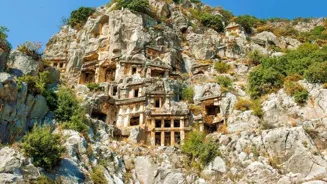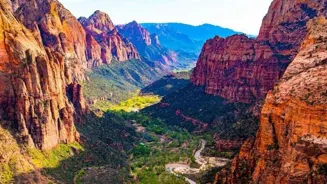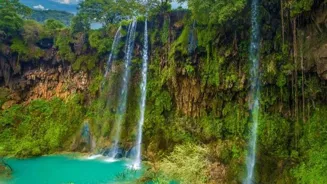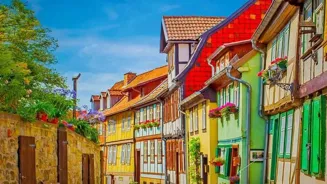Uncover India's Ancient Ruins: A Journey Through Time & Civilization. Explore 7 sites revealing rich heritage & stories
India, a land steeped in history and culture, boasts a treasure trove of ancient ruins
that whisper tales of bygone eras. These sites, scattered across the country, offer a glimpse into the lives, beliefs, and achievements of our ancestors.
Exploring them is like stepping back in time, connecting with the roots of civilization and understanding the rich tapestry that makes India so unique.
From the majestic temples of the south to the sprawling cities of the north, each ruin holds a piece of the puzzle, contributing to the grand narrative of India's past. Let's embark on a journey to discover seven such remarkable sites.
Hampi, a UNESCO World Heritage site, showcases architectural marvel of Vijayanagara Empire
First on our list is the magnificent Hampi, a UNESCO World Heritage site in Karnataka. Once the capital of the Vijayanagara Empire, Hampi is an architectural marvel, showcasing a blend of Dravidian and Islamic styles.
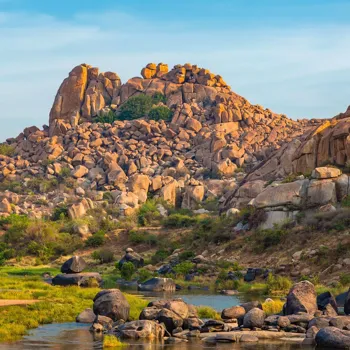
Imagine massive boulders strewn across the landscape, interspersed with intricately carved temples, palaces, and market streets. The Virupaksha Temple, still an active place of worship, stands tall as a testament to the empire's devotion. Hampi truly transports you to an era of royal grandeur.
Nalanda University: Ancient center of learning in Bihar, India
Our journey takes us next to Nalanda, in Bihar, the ancient center of learning. Founded in the 5th century, Nalanda University attracted scholars from across Asia, becoming a beacon of knowledge for centuries.
The ruins reveal residential quarters, lecture halls, and meditation spaces, demonstrating the organized and structured approach to education. Imagine the lively debates and scholarly discussions that once filled these very courtyards.
Nalanda stands as a reminder of India's contribution to the world of education and intellectual pursuit. Its well planned design gives you an insight of the planning that the people of that period carried out during their construction.
Exploring Ajanta and Ellora: Marvels of rock-cut cave artistry in Maharashtra
Moving towards the west, we encounter the caves of Ajanta and Ellora in Maharashtra. These rock-cut cave temples represent a remarkable feat of engineering and artistry.
Ajanta, primarily Buddhist, showcases stunning murals depicting scenes from the Jataka tales, offering insights into Buddhist philosophy and art. Ellora, on the other hand, is a confluence of three religions – Buddhism, Hinduism, and Jainism – with cave temples dedicated to each faith.
The monolithic Kailasa Temple, carved out of a single rock, is the highlight of Ellora, a testament to human ingenuity and spiritual devotion. These cave paintings that are present in Ajanta are breath taking and depict the tales of Buddha.
Exploring the advanced Indus Valley Civilization at Dholavira in Gujarat
Our list would be incomplete without mentioning the Indus Valley Civilization, with sites like Dholavira in Gujarat.
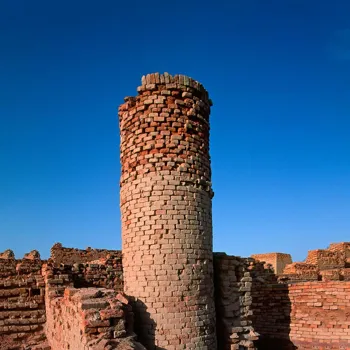
Dholavira, one of the best-preserved cities of the Indus Valley Civilization, reveals a sophisticated urban planning system, advanced water management techniques, and a unique script that still remains undeciphered.
Walking through the meticulously planned streets and examining the intricate drainage systems, one can appreciate the advanced level of civilization that existed here around 4500 years ago. This civilisation gives us the idea of how people used to live at that period.
In the present time, it is difficult to imagine such a level of planning as compared to how these ancestral people carried it out.
Explore Mahabalipuram's UNESCO site showcasing ancient Tamil artistry
The sun-kissed shores of Tamil Nadu beckon us to Mahabalipuram, a UNESCO World Heritage site known for its rock-cut temples and sculptures. The Shore Temple, standing majestically against the backdrop of the Bay of Bengal, is an iconic landmark.
The Five Rathas, monolithic rock temples carved in the shape of chariots, showcase the skill of Pallava artisans. The Descent of the Ganges, a massive bas-relief carving, narrates stories from Hindu mythology.
Mahabalipuram is a visual treat, a testament to the artistic prowess of ancient Tamil dynasties. The art forms displays are of the highest level. It gives us insight on how beautifully those artistic representation have been potraited.
Ruins of Lothal showcase maritime trade in Indus Valley
Finally, we arrive at the ruins of Lothal, another significant site of the Indus Valley Civilization, also located in Gujarat. Lothal was a thriving port city, showcasing the maritime trade and economic activities of the civilization.
The dockyard, one of the oldest in the world, provides evidence of advanced engineering skills. Artifacts discovered here, such as seals, pottery, and jewelry, offer glimpses into the daily lives of the people.
Lothal's strategic location and well-planned infrastructure highlight the importance of trade and commerce in the Indus Valley Civilization.
AI Generated Content. Glance/InMobi shall have no liability for the content